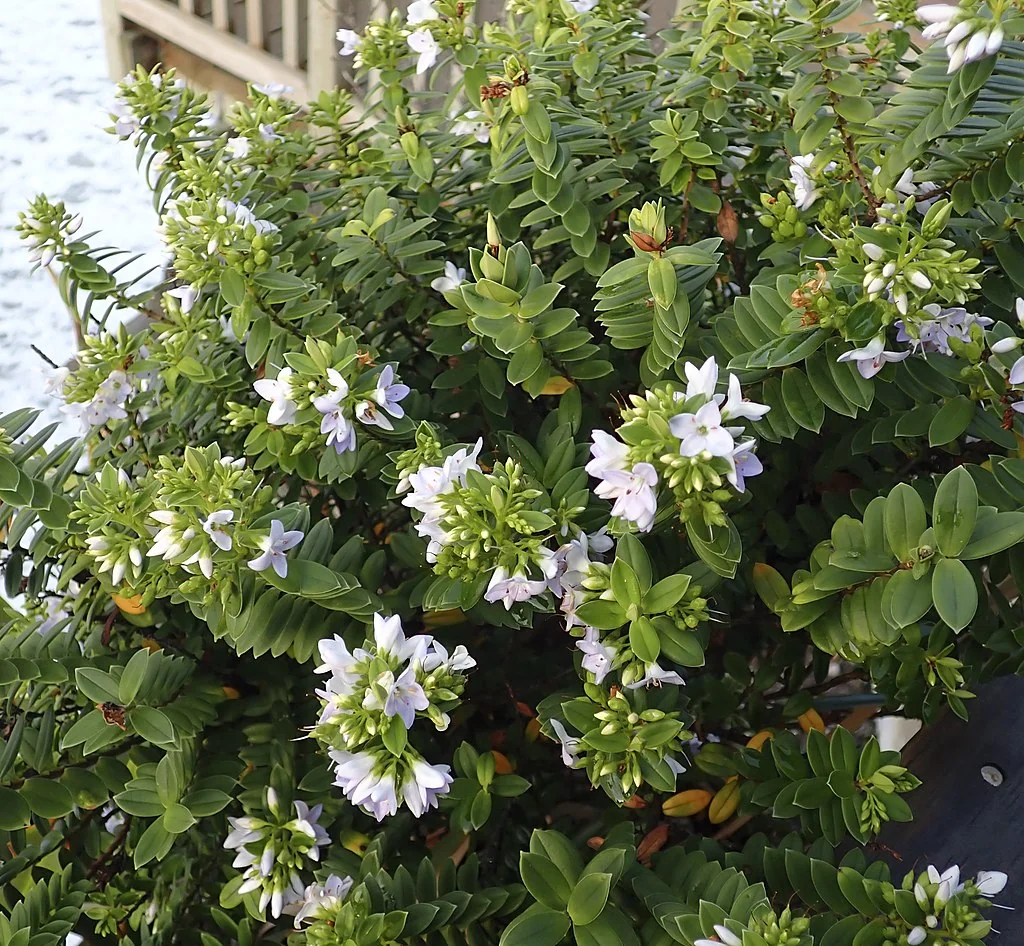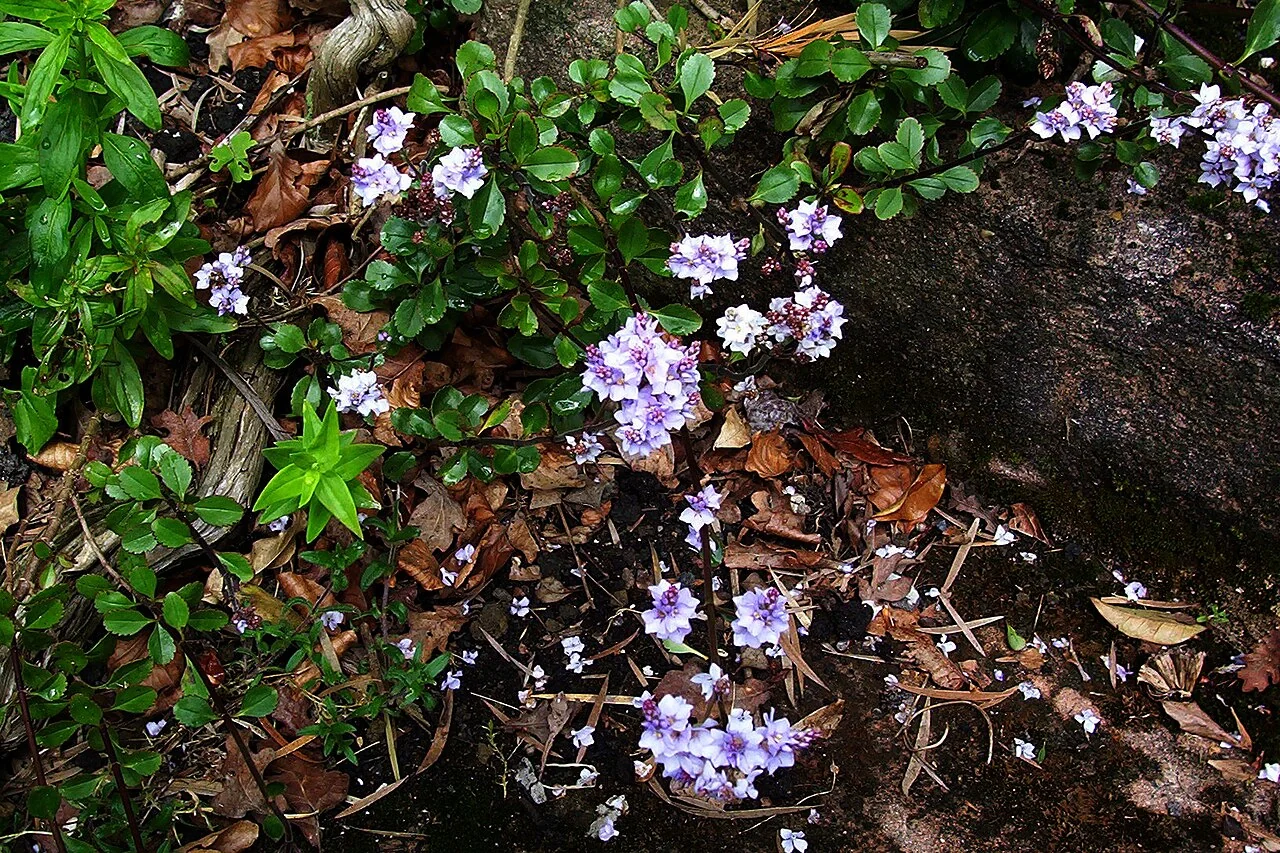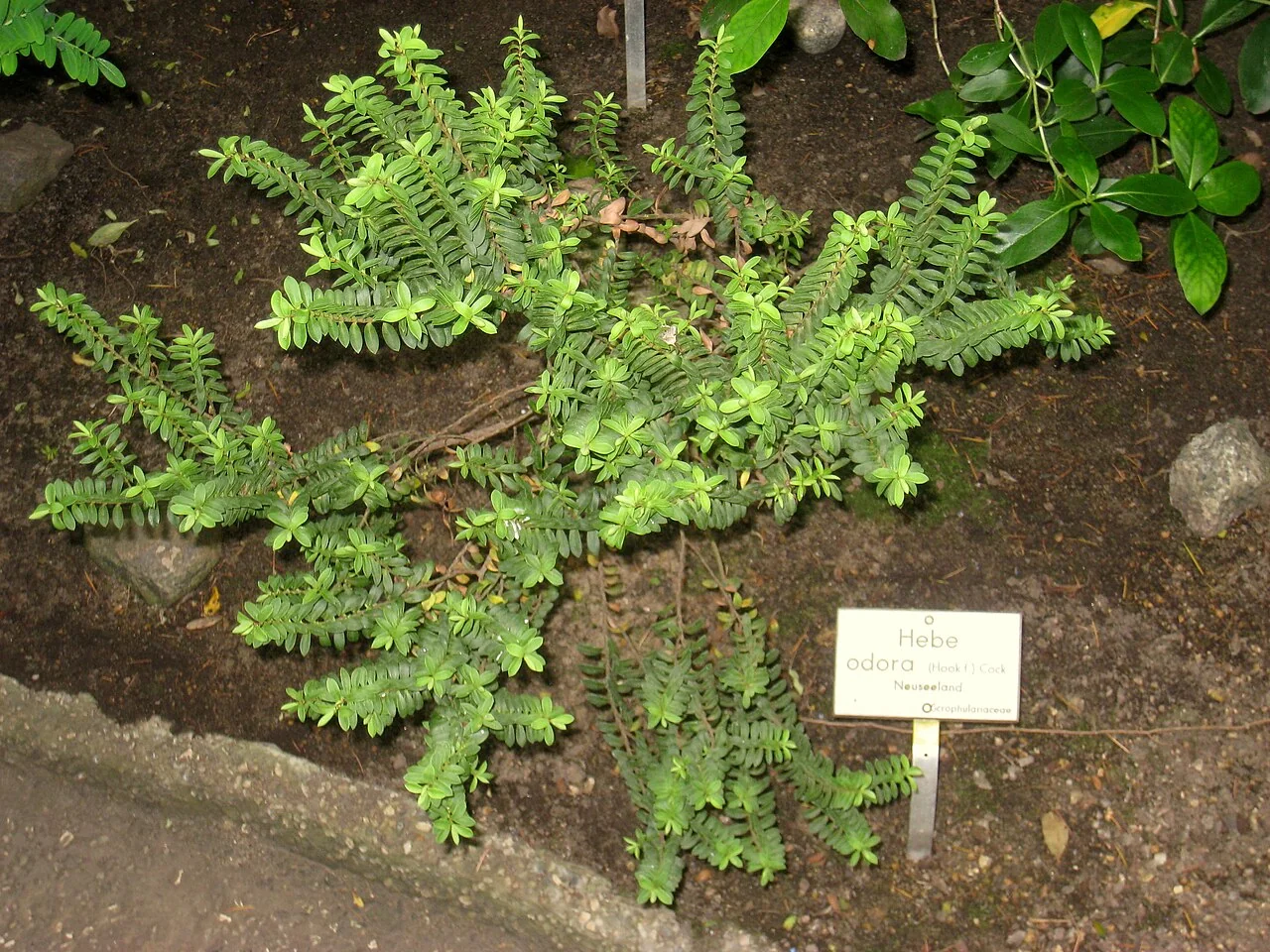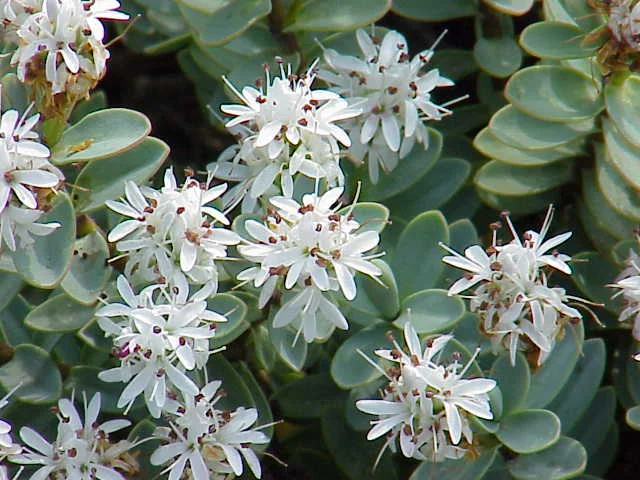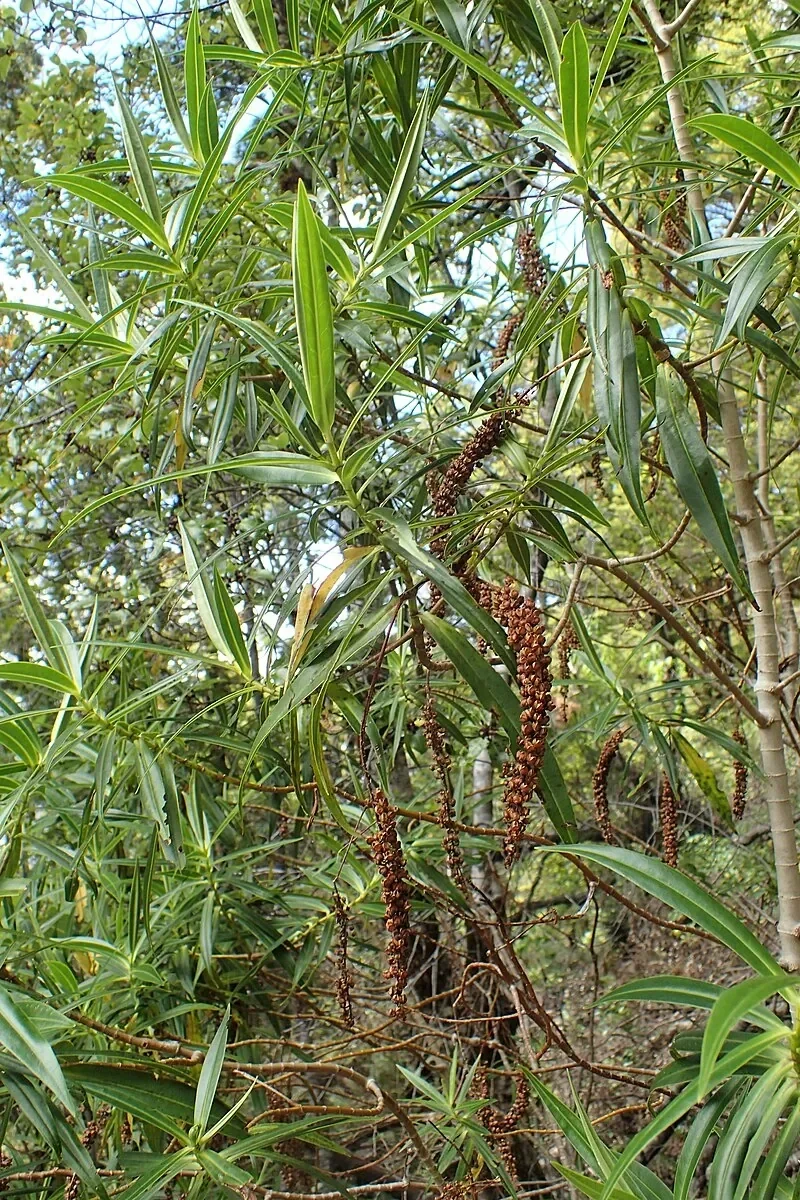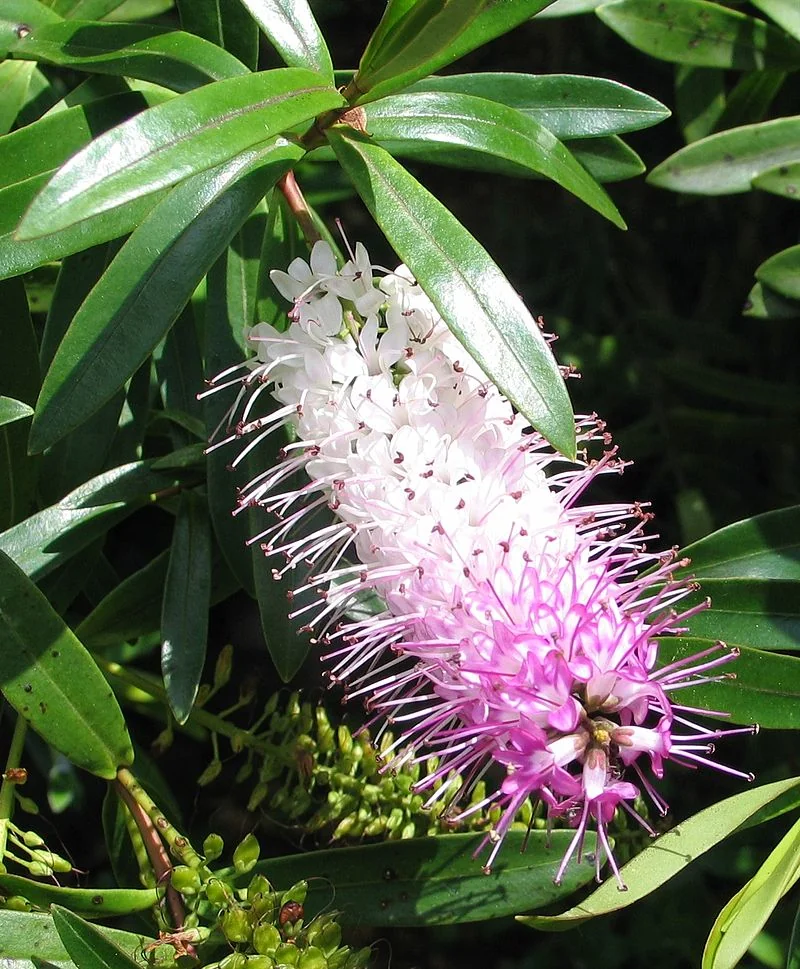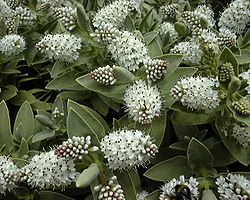
Snow Hebe
Veronica albicans
Introduction
Introduction Overview
Veronica albicans (snow hebe) is a compact alpine/subalpine shrub (formerly in the genus Hebe ) forming neat, dome-shaped cushions 0.30.6 m tall with small grey-green leaves and white to pale lilac flowers in summer. Native to higher altitude sites in the South Island, it prefers free-draining, gritty soils and cool conditions, making it ideal for rock gardens and troughs. alpine plants .

Plant Description
Botanical Features
Snow Hebe ( Veronica albicans ), also known by its synonym Hebe albicans , is a species of flowering plant in the family Plantaginaceae, native to New Zealand. It is an evergreen shrub that typically grows to 60 cm tall by 90 cm wide, though it can reach up to 1 meter in height. It features thick, bluish or blue-green leaves that are 1.5-3 cm long and 8-15 mm wide. The leaves are arranged in whorls around the stem and can vary in shape from oval to long narrow pointed pairs. Small, white flowers appear on flowerheads that are 3-6 cm in length, typically from December to April. The Latin specific epithet "albicans" refers to the off-white colour of its flowers. V. albicans is found in the mountainous region around Nelson, New Zealand, at altitudes of 1,000-1,400 meters. It grows in a range of habitats, often on rocks, from near sea-level to subalpine and penalpine situations. It is an openly branched, spreading low or small bushy shrub.
Quick Facts
Quick Facts Overview
| Scientific Name | Veronica Albicans |
|---|---|
| Height | 0.30.6 m |
| Spread | 0.51.0 m |
| Water Needs | Low to moderate (excellent drainage) |
| Light | Full sun in cool climates; part shade in heat |
| Frost Tolerance | High |
| Salt Tolerance | Low to moderate |
| Growth Rate | Slow to moderate |
| Lifespan | Long-lived perennial |
Climate Best Suited to
An alpine /subalpine hebe preferring cool summers and free-draining soils. Best performance occurs in cooler districts and elevated sites with good air movement.
Regional Suitability
| Whangārei | Ideal |
| Auckland | Ideal |
| Hamilton | Suitable |
| Rotorua | Suitable |
| Tauranga | Ideal |
| Gisborne | Ideal |
| New Plymouth | Ideal |
| Whanganui | Ideal |
| Palmerston North | Suitable |
| Napier | Ideal |
| Wellington | Ideal |
| Nelson | Ideal |
| Christchurch | Suitable |
| Dunedin | Suitable |
| Invercargill | Suitable |
| City | Climate Suitability |
|---|
Natural Habitat
Snow Hebe ( Veronica albicans ), also known by its synonym Hebe albicans , is a species of flowering plant endemic to New Zealand. It is primarily found in the mountainous region around Nelson, New Zealand, at altitudes of 1,000-1,400 meters (3,300-4,600 ft).
Key Habitats Include:
- Rocky Alpine and Subalpine Areas: It typically grows on rocks (often calcareous) from just above sea-level to subalpine and penalpine situations. This indicates its preference for well-drained, rocky, and exposed sites.
- Grasslands and Scrublands: It can also be found in grasslands and scrublands, showcasing its adaptability to open environments.
Preferred Conditions:
- Cool, Dry Conditions: It prefers cool, dry conditions with excellent drainage, making it ideal for rock gardens and troughs.
- Light: It thrives in full sun in cooler climates, but benefits from partial shade in hotter areas.
- Tolerance: It is a hardy, low-spreading, bushy shrub that can grow in a wide range of different habitats, demonstrating high frost tolerance.
The presence of Veronica albicans in these specific habitats underscores its ecological importance in contributing to the biodiversity and unique flora of New Zealand's mountainous regions.
Plant Conservation
Veronica albicans , also known as white hebe, is a species of flowering plant native to New Zealand. As of 2023, Veronica albicans is classified as "Not Threatened" by the NZPCN, a status it has held since at least 2012. This indicates that the species is not currently facing significant threats to its survival in the wild. Despite its "Not Threatened" status, general plant conservation efforts in New Zealand, often spearheaded by organizations like the NZPCN, contribute to the ongoing protection of native flora, including species like Veronica albicans . These efforts typically involve habitat protection, monitoring, and promoting sustainable practices.
Growing Requirements
Soil
Excellent drainage is essential.
- Gritty, free-draining rock garden mix
- pH neutral to slightly acidic
- Raised bed or trough planting recommended
Light
Cool, bright conditions suit best.
- Full sun in cooler districts
- Light afternoon shade in hotter areas
- Shelter from scorching winds
Water
Even moisture without saturation.
- Water sparingly but regularly in summer
- Avoid winter wet around crown
- Mulch with gravel to keep stems dry
Planting Guide
When to Plant
Best in spring or early autumn when extremes of heat and wet are unlikely.
Site Selection
- Raised bed , scree, or trough for sharp drainage
- Cool aspect with good air movement
Ecological Role
Environmental Impact
Provides nectar and pollen for native insects over a long season; branching offers shelter for invertebrates and lizards; useful in restoration as a nurse shrub.
Veronica play vital ecological roles as nectar sources for native insects, butterflies, and occasionally birds, with their abundant flowers providing food throughout much of the growing season. Many species serve as nurse plants in harsh environments, creating sheltered microsites that enable other native plants to establish. Their diverse growth forms from groundcovers to small trees fill numerous ecological niches in New Zealand's ecosystems.
Uses and Significance
Garden Uses
- Veronica albicans is ideally suited for alpine rock gardens and troughs, where its compact, dome-shaped habit and free-draining requirements are perfectly met, creating a striking feature.
- It serves as an excellent compact foreground plant in gravel gardens, providing year-round grey-green foliage and seasonal white flowers that add texture and interest.
- This species is a valuable addition to collections of South Island hebes and alpine plants, showcasing its unique adaptations to cooler climates and exposed conditions.
Cultural Significance
Traditional Uses and Values
Veronica albicans , also known as Snow Hebe or White Hebe, holds cultural significance primarily within New Zealand, its native habitat. This plant, and related Veronica species (formerly classified under Hebe ), are notable for their role in Māori culture and traditional practices. Key aspects of its cultural significance include: Māori Traditional Uses (Rongoā Māori) : Veronica species, including Koromiko (a related Hebe), are found in rongoā Māori, the traditional Māori system of medicine. They are valued for their resilience and historical association with coastal regions. Sophisticated Horticultural Practices : Research into the DNA of Veronica species has revealed that Māori engaged in deliberate cultivation and transplantation of attractive red-flowered varieties south of West Auckland. This demonstrates advanced horticultural practices, where these plants were appreciated for their ornamental qualities and moved to new locations to establish enduring populations. This represents one of the few documented instances of pre-European ornamental plant cultivation in New Zealand. Ecological Importance : Beyond direct human use, Veronica species contribute significantly to the ecosystem. They serve as crucial nectar sources for native insects, butterflies, and occasionally birds, providing food throughout much of the growing season. Many species also function as "nurse plants" in challenging environments, creating sheltered micro-sites that facilitate the establishment of other native flora.
Landscaping Section
Landscaping Section Overview
Use as bold feature or informal hedge near coasts; pairs well with Olearia, Coprosma, and dwarf Phormium; space for airflow in humid districts.
This section provides important information about plant care and cultivation practices. Understanding these aspects helps ensure successful growth and development in garden conditions.
Seasonal Care Calendar
Spring
- Resume watering as growth begins
- Light trim to maintain cushion form
- Top-dress with gritty mix
Summer
- Main flowering period; deadhead spent spikes
- Water during dry spells; avoid splash on crown
- Provide light shade in heat waves
Autumn
- Reduce watering as temperatures fall
- Check drainage ahead of winter wet
Winter
- Keep crown dry; avoid waterlogging
- Protect from hard frost in containers
When to Prune and How Much
When to Prune and How Much Overview
Minimal pruning . Lightly clip after flowering to maintain a compact dome; avoid cutting into old wood.
How to Grow Snow Hebe
Snow Hebe is a resilient and attractive alpine shrub that is relatively easy to grow, provided its key requirements for drainage and cool conditions are met. It is an excellent choice for rock gardens, troughs, or as a low-maintenance container plant. Its compact, dome-like shape and dense, grey-green foliage provide year-round structure and interest, while its profusion of white flowers in summer adds a delicate beauty to any garden setting.
From Cuttings
Propagating Snow Hebe from cuttings is the most reliable method to ensure the new plant is true to the parent's form. Take semi-hardwood cuttings, about 6-8 inches long, from healthy, non-flowering stems in late summer or early autumn. Strip the leaves from the lower half of the cutting and dip the base in a rooting hormone to encourage root development. Plant the cuttings into a free-draining mix of sand and compost, and keep them in a warm, sheltered spot with consistent moisture. Roots should develop within a few months.
From Seed
While it is possible to grow Snow Hebe from seed, it is a slower process and the resulting plants may show some variation. Sow the seeds in a tray of moist, well-draining seed-raising mix in spring. Cover the seeds with a fine layer of soil and keep the tray in a warm, bright location, but out of direct sunlight. Maintain a consistent temperature of around 20°C. Germination can take several weeks to a few months. Once the seedlings are large enough to handle, they can be pricked out and potted into individual containers to grow on before planting out.
Pests and Diseases
Pests and Diseases Overview
Generally healthy in sharp drainage. Watch for root rot in winter-wet soils; treat mealybugs on container plants if present.
Bonus Tip
Veronica albicans , commonly known as Snow Hebe, was formerly classified under the genus Hebe before its reclassification to Veronica . This compact, mound-forming shrub is highly valued in landscaping for its neat habit, attractive glaucous leaves, and abundant white flowers. It's incredibly versatile, suitable for rock gardens, containers, borders, ground cover, and low hedging, offering year-round interest and a good backdrop for other plants.


